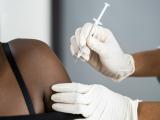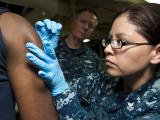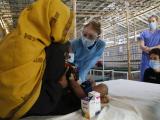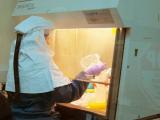Nov 30, 2001 (CIDRAP News) About 19% of more than 3,000 postal workers who took ciprofloxacin to prevent anthrax from the recent bioterrorist attacks reported having "severe" gastrointestinal side effects, but only 2% sought medical attention for them, according to the Centers for Disease Control and Prevention (CDC). Officials described the findings as being in line with other reports on ciprofloxacin.
The finding is among results of a CDC survey of postal workers in New York, New Jersey, and Washington, DC, presented in today's issue of Morbidity and Mortality Weekly Report (MMWR).
The CDC administered a questionnaire to the postal workers in late October and early November, when they returned for medication refills after taking antibiotics for a week to 10 days. Of 5,819 workers who completed the questionnaire, 3,863 had started taking prophylactic antibiotics. Of that number, 3,428 took ciprofloxacin, and 435 took doxycycline, amoxicillin, or another drug.
The report states, "Of the 3,428 persons on ciprofloxacin, 666 (19%) reported severe nausea, vomiting, diarrhea, or abdominal pain; 484 (14%) reported fainting, light-headedness, or dizziness; 250 (7%) reported heartburn or acid reflux; and 216 (6%) reported rashes, hives, or itchy skin." Three percent (116 workers) stopped taking the drug because of the side effects, while another 5% stopped taking it for other reasons, such as fear of side effects and doubt about the need for it.
About 2% of the workers taking ciprofloxacin and 2% of those taking any antibiotic sought medical attention for symptoms suggestive of anaphylaxis, the report says. None of the 33 workers in New York and New Jersey who sought follow-up care were hospitalized, and none of their symptoms were attributed to the antibiotics. Follow-up of Washington workers who sought medical care is continuing, the report says.
The report says the ciprofloxacin side-effect rates seen in the survey are similar to the rates in patients taking the drug for any reason. At the CDC's Nov 29 telephone press conference, Nancy Rosenstein, MD, of the CDC was asked whether the 19% rate of gastrointestinal side effects is higher than what has been reported elsewhere. She replied that the survey was a cross-sectional one in which "the individuals themselves reported how much nausea they were having. And so while that number may be slightly higher than what's in the PDR [Physician's Desk Reference], it still is within the realm of the same as other reports."
The MMWR report notes that the adverse event rates were significantly higher in the New Jersey workers than in the Washington and New York workers. The report says this is probably due to the different methods of survey administration: handled by nurses in New Jersey, but self-administered elsewhere.
Today's MMWR also includes a report on the investigation into the case of Ottilie Lundgren, the elderly Connecticut woman who died of inhalational anthrax last week. The report says the Bacillus anthracis strain involved "was indistinguishable by molecular typing and antibiotic susceptibility patterns when compared with the strain from recently identified cases of bioterrorism-related anthrax." But despite extensive environmental sampling and testing of nasal swabs from Lundgren's friends and relatives and from 460 postal workers, the CDC has not been able to find the source of the anthrax. Some mail that was delivered to Lundgren's local post office had passed through a Trenton, N.J., mail facility shortly after two anthrax-laced letters to US senators had been processed there, but none of those letters are known to have reached Lundgren, the report states.
See also:
CDC. Update: adverse events associated with anthrax prophylaxis among postal employeesNew Jersey, New York City, and the District of Columbia metropolitan area, 2001. MMWR 2001(Nov 30):50(47):1051-4
http://www.cdc.gov/mmwr/preview/mmwrhtml/mm5047a2.htm
CDC. Update: investigation of bioterrorism-related inhalational anthraxConnecticut, 2001. MMWR 2001(Nov 30):50(47):1049-51
http://www.cdc.gov/mmwr/preview/mmwrhtml/mm5047a1.htm



















